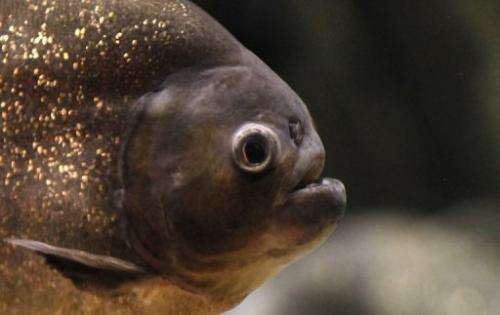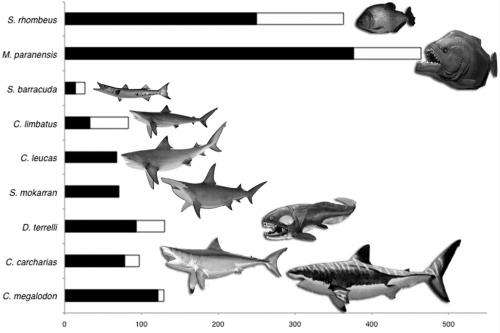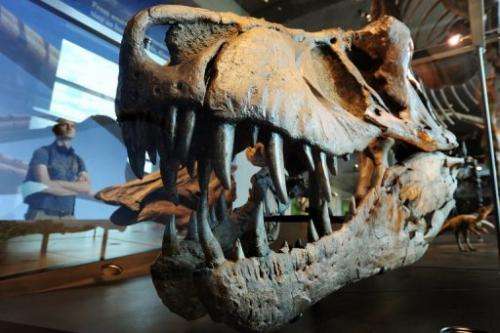Piranha tops T Rex in the bite league, study finds

Outsized jaw muscles allow the black piranha to exert bite force equivalent to 30 times its bodyweight, a feat unmatched in the natural world, according to results of a finger-risking study published Thursday.
Other animals like the great white shark, the hyena and the alligator can deliver more forceful bites, but their crunching power becomes much less impressive when viewed in relation to their overall size and weight, it said.
In fact, relative to their size, piranhas outperform even prehistoric monsters like Tyrannosaurus rex and the whale-chomping megalodon, a massive shark that preceded the great white, said the study.
Published in the journal Scientific Reports, the research saw scientists catch 15 black piranhas in Brazil's Amazon River basin and risk their digits by teasing a customised force gauge between their serrated jaws.
The fish, ranging from about 20 to 37 centimetres (eight to 15 inches) in length, "readily performed multiple defensive bites" on the gadget, wrote the team from the United States, Egypt and Brazil.
This was the first live measurement of bite force taken from the black piranha (Serrasalmus rhombeus), the largest of the notoriously carnivorous species.
Such undertakings are "rare, dangerous and difficult to perform," wrote the research team.

"While anecdotes of piranha-infested waters skeletonising hapless victims are generally hyperbole, the effectiveness of their bite is not," the scientists added.
They pointed to "documented cases of S. rhombeus biting off and consuming human phalanges"—the bones found in fingers and toes.
The measured bite force of the black piranha, at 320 newton (N), was nearly three times greater than that exerted by an American alligator of comparative size, said the study.
One newton is the force required to move a kilogramme (2.2 pounds) of mass at one metre (3.25 feet) per second squared.
How does the tiny fish do it?

It has jaw muscles of an "extraordinary" size and a highly modified jaw-closing lever, said the team.
In fact, the muscle complex makes more than two percent of the black piranha's total body mass.
The team also used the data they gathered to estimate the bite force of the extinct Megapiranha paranensis to have been between 1,240 and 4,749 N.
The fish from the Miocene period, which ended about five million years ago, would have been about 70 centimetres long and weighed about 10 kilogrammes (22 pounds), they said.
"Our analysis predicts Megapiranha's bite was equivalent to the anterior bite force of a great white shark weighing over 400 kilos (880 pounds)," said the report.
And though their diet remains a secret of history, the monster fish would have been able to crush turtles, armoured catfish and even larger terrestrial animals.
"If our fossil reconstructions and simulations are correct, then Megapiranha paranensis was indeed a ferocious bone-crushing mega-predator of the Miocene epoch," just like its modern-day relative, said the report.
"Our results for living and extinct species validate the fearsome predatory reputations of piranhas."
More information: Mega-Bites: Extreme jaw forces of living and extinct piranhas, www.nature.com/srep/2012/12122 … /full/srep01009.html
Journal information: Scientific Reports
(c) 2012 AFP



















